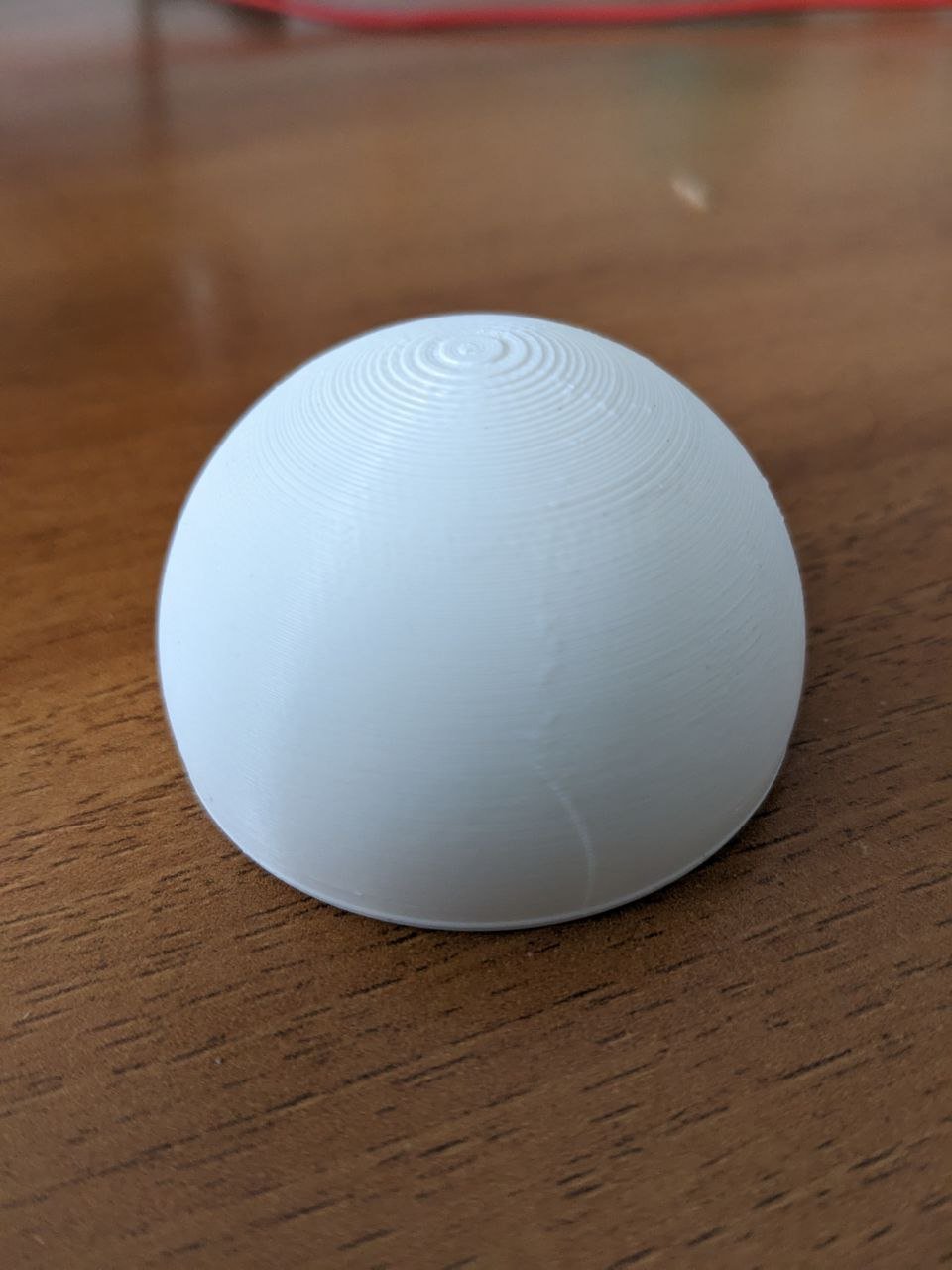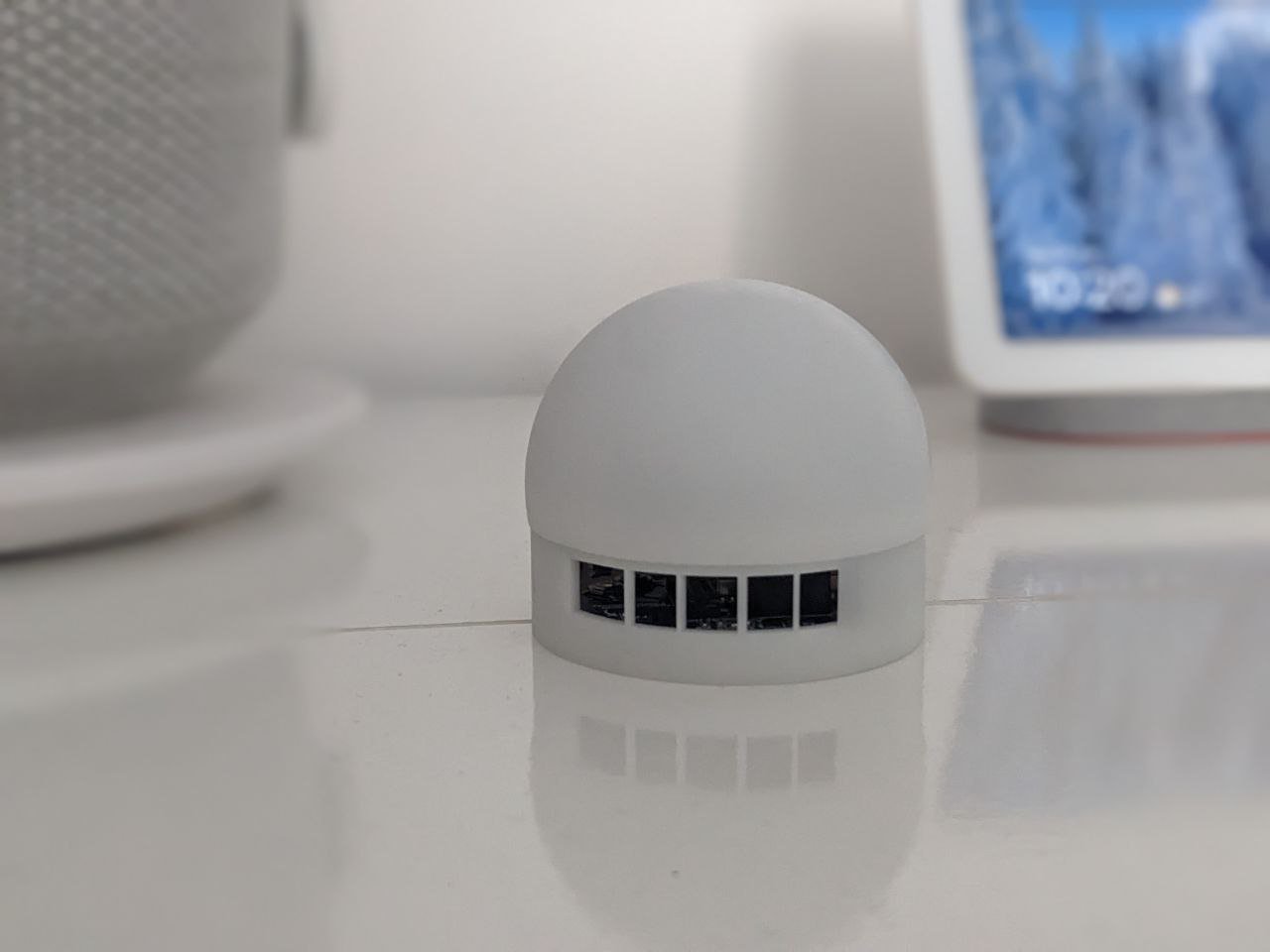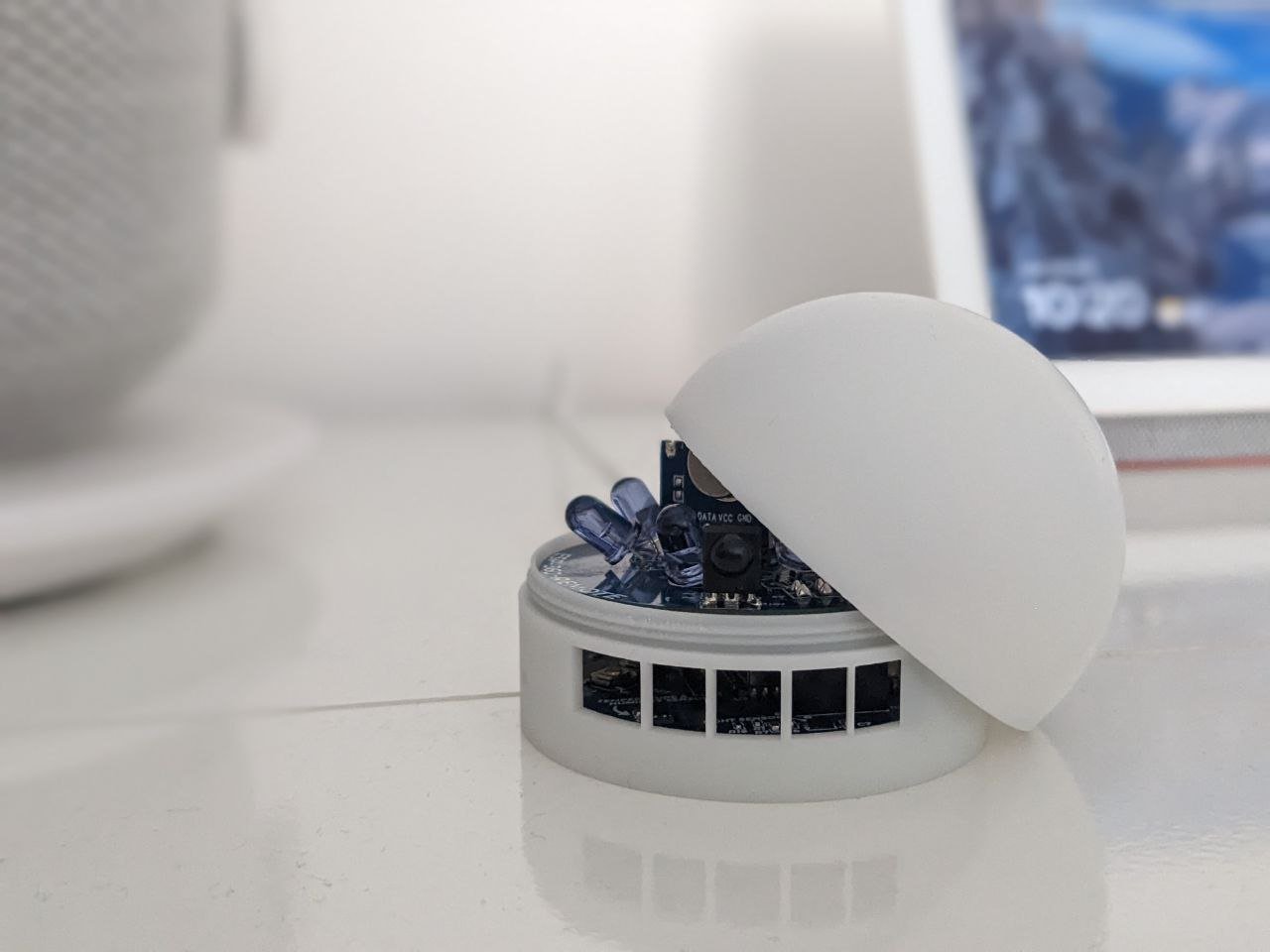Project update 4 of 12
All About Enclosures
by Alessandro AHey everyone, thanks for another successful week of the ESP 360 Remote campaign! Today I wanted to talk a little bit about the enclosure for the ESP 360 Remote. I understand that many of you do not have access to a 3D printer, or might prefer to have it created through a 3rd party 3D printing service. Luckily, JLCPCB has a very cheap printing options available. However, JLPCB (and other services) offer a variety of 3D printing materials, which may have different effects on the effectiveness of the infrared signals. So, I decided to try some different materials to give you some reliable feedback, so that you don’t waste time and money experimenting with different materials.
The materials provided by JLCPCB are:
In my opinion, the only ones that make sense to try are Resin and ABS. In particular, I ordered the top part of the case (the dome) in the following types:
- LEDO 6060 Resin
- 9000R Resin
- 8111X Resin
- FDM (ABS)
While the bottom part is only in 9000R Resin, the bottom section doesn’t make much difference since it doesn’t block the IR LEDs.
The folks from JLCPCB only asked me to thicken up a bit the top part of the case to be printed correctly. So in the Github repo you’ll find the updated enclosures files. I tested them for over a week in different conditions and only in a domestic environment, and I didn’t notice any problems with any of the materials. There doesn’t seem to be any decrease in the effectiveness of the infrared LEDs. For example, my air conditioner is not in the line of sight of the ESP 360 Remote, but it is in the hallway, so there is an angle to turn, and even with these materials, I had no problems controlling it. In the video of the IR automation from the last update, the ESP 360 Remote already had the resin case and you saw that it worked without problems.
ABS was the material I had the most doubts about, which apparently were unfounded. Probably the material itself could interfere, but maybe it’s thanks to the thin enclosure, or the layered nature of FDM 3D printing that the light manages to come out of the case and reach the appliance. As you can see from the image below, ABS, being printed with an FDM printer with standard layer height, has the usual layered aesthetic that looks very "home-made".
The resin domes, on the other hand, are really much more sleek and professional-looking. I don’t know how much it can be appreciated in photos, but in person, the appearance is much smoother and cleaner.
Not seeing the layers aesthetically makes the ESP 360 Remote looks even more crisp! The tone of white changes slightly from one resin to another, although all of them are somewhat translucent, helping the infrared to pass through. Another advantage is the resistance to yellowing over time, which unfortunately was afflicting my old PLA enclosure. The only thing I noticed, which may be due to printer tolerances or material shrinkage, is that it was slightly more difficult to screw the domes of materials that were not the same onto the 9000R base. It’s not a big deal, but I thought it was worth mentioning. So obviously, try to make both parts of the case with the same material.
In conclusion, I strongly recommend this "upgrade" even for those who already have a 3D printer, to give a really nice touch to your ESP 360 Remote, which through JLPCB only cost me 1 euro for the base and 1 euro for the dome, for a total of 2 euros + shipping. Personally, I will keep the 9000R Resin case and will be sure to update you if there is any change in yellowing or infrared power. I hope this update was helpful to you, and please consider pre-ordering your ESP 360 Remote while its still available at the lowest price!



